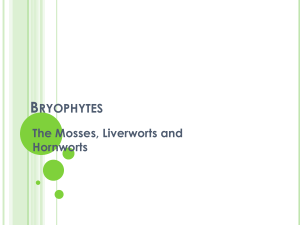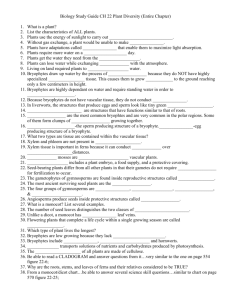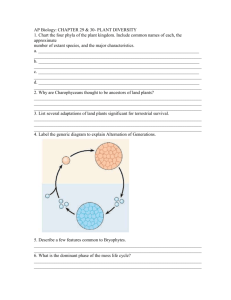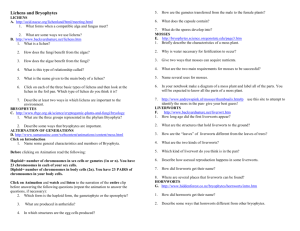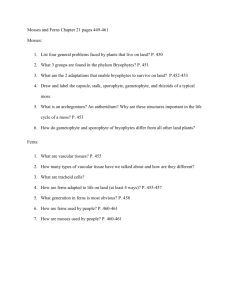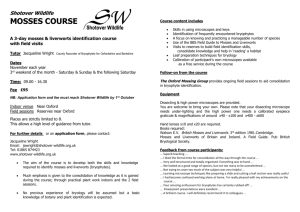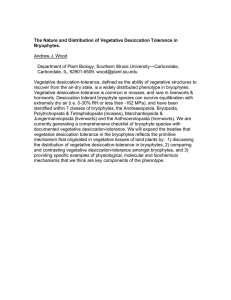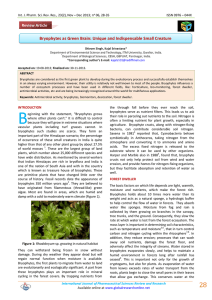Bryophytes
advertisement
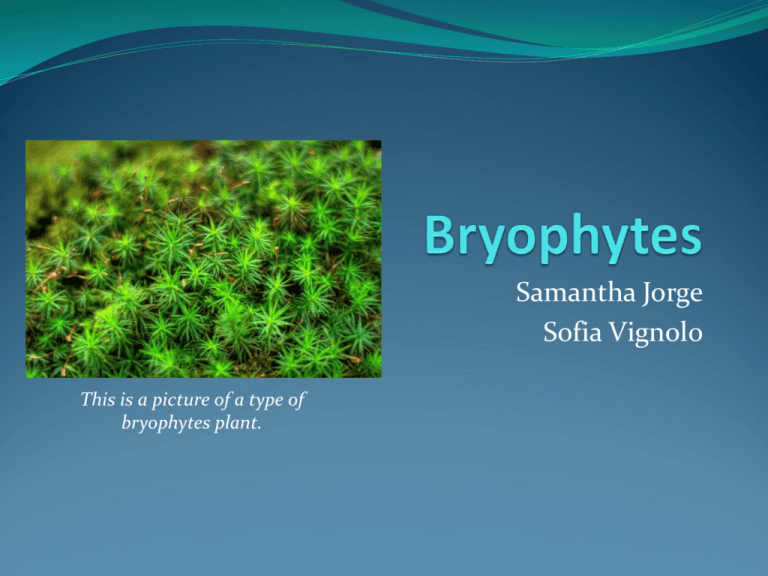
Samantha Jorge Sofia Vignolo This is a picture of a type of bryophytes plant. What are Bryophytes? Bryophytes are nonvascular plants: they have tissues and enclosed reproductive systems, but they lack vascular tissue that circulates liquids. They have life cycles the depend on water for reproduction. They neither have flowers nor produce seeds, reproducing via spores. Groups of Bryophytes Mosses Mosses are small, soft plants that are usually 1-10 centimeter tall, though some species can be much larger. They typically grow close together in moist or shady areas. They do not contain flowers or seeds. There are approximately 12,000 species of moss classified in the Bryophyta. Groups of Bryophytes (cont.) Liverworts Liverworts are typically, small; ranging from 2-20 millimeters wide. However, certain species may cover large patches of ground, rocks, trees or any other reasonably firm substrate on which they occur. They are distributed globally in almost every available habitat, most often in humid locations, although there are desert and arctic species as well. Groups of Bryophytes (cont.) Hornworts Hornworts are a group of non-vascular plants. Hornworts may be found worldwide, though they tend to grow only in places that are damp or humid. Some species grow in large numbers as tiny weeds in the soil of gardens and cultivated fields. Mosses Liverworts Hornworts Life Cycle of Bryophytes In bryophytes, the gametophyte is the dominant, recognizable stage of the life cycle and is the stage that carries out most of the plant’s photosynthesis. Dispersal in bryophytes is via spores; they neither have flowers nor produce seeds. Bryophytes do produce gametes that fuse to form a zygote, which in turn develops into an embryo, but this is not contained in a seed as in gymnosperms and angiosperms. Life Cycle of Bryophytes (cont.) Dependence on Water: For fertilization to occur, the sperm of a bryophyte must swim to an egg. Sometimes raindrops can splash sperm from one plant to another. Because of this limit to reproduction, bryophytes must live in habitats where water is available. Life Cycle of a Bryophyte Human Use of Mosses Humans use some types moss as a natural sponge, since it absorbs water . Peat moss can be cut from the ground and then burned as a fuel. Peat moss is also used for gardening; gardeners add peat moss to the soil so it can improve the soil’s ability to retain water. Peat moss has a low pH, so when affected to the soil it increases the soil’s acidity.

